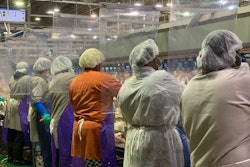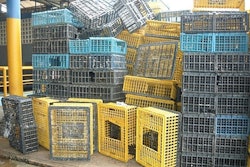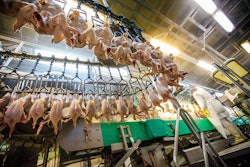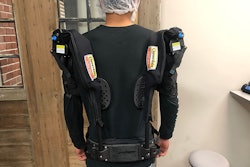
Increasing line speed is not as simple as flipping a switch, especially in the age of COVID-19. It requires careful attention to each station on the processing line and validation that food safety is not compromised.
As part of the U.S. Poultry & Egg Association’s virtual 2020 Poultry Processor Workshop, Juan DeVillena, director of quality assurance and food safety at Wayne Farms LLC, spoke about how the widespread effects of COVID-19 are impacting the implementation of line speed waivers granted to plants working on the New Poultry Inspection System (NPIS). He spoke on October 7.
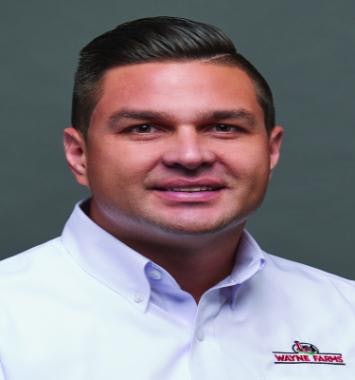
Juanfra DeVillena, Wayne Farms LLC (Courtesy Wayne Farms LLC)
Receiving a line speed waiver allows a 25% increase in processing speeds up to 175 birds per minute from the previous line speed limit of 140 birds per minute (BPM). However, processors must consider how increasing that speed will affect every single phase of processing from receiving of live birds to deboning and packing. There may also be a need for additional real estate, machinery or personnel to handle increased processing speed. This is further complicated by the higher-than-normal absenteeism and need for social distancing associated with the ongoing COVID-19 pandemic.
The line speed waiver
Line speed waivers require federal approval. DeVillena said once the waiver is granted, plants must increase their line speed. This is an issue for plants facing staffing issues related to COVID-19.
The NPIS was introduced in 2014 to allow poultry plants to replace U.S. Department of Agriculture (USDA) evisceration line inspectors with their own employees. It allows plants operating on this plan for more than a year to receive a line speed waiver to increase their speeds up to 175 BPM. Wayne Farms LLC began transitioning all its plants to NPIS in 2018. In spring 2019, Wayne Farms’ Dothan, Alabama, plant was granted a line speed waiver by the USDA Food Safety and Inspection Service to increase its line speed to 175 BPM.
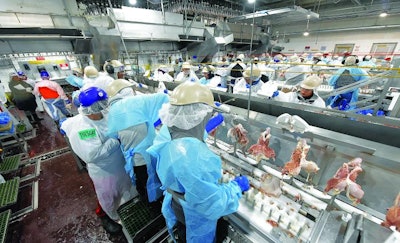
Deboning is the bottleneck area for processors increasing line speed. (Courtesy Wayne Farms LLC)
COVID-19’s effect on new recipients
DeVillena said the process for application was interrupted by COVID, with the last plant receiving approval by April 2020 and some plants who received their waiver, able to increase line speed 6 months after receiving it, due to the pandemic. Some plants were forced to put it into action in a much different situation than when they applied for it. Nevertheless, retention of the waiver requires the processor to maintain food safety standards, worker safety and animal welfare.
Plants that received the waiver are required to prove they are maintaining their eligibility. That means submitting regular reports to the USDA verifying the plant is meeting standards. These include paired data samples for aerobic plant counts (APC) and a paired sample for Salmonella from both rehang and post-chill on a weekly basis. If a plant does not prove its meeting standards, it can have its waiver pulled and line speed reduced.
Due to on-going staffing issues and production cuts related to decreased demand for certain products, processors are finding it difficult to increase line speed as quicker processing requires more hands working the line. Those who have received a waiver had a chance to make up for any time lost to COVID-19 or other factors by running either one line, or both lines, at greater than 140 BPM at times when it was possible.
Protecting welfare
A 25% increase in speed creates new demands for the animals and the employees. Processors need to examine each phase of their operation with an eye toward protecting the welfare of the animals and the employees.
At the start of the process, quicker processing will create demand for more birds to be processed and potentially change the amount of time birds are in lairage. Managers should consider whether they will need to change the conditions in the live area for the birds and for the employees. Additional loaders and forklifts may be needed and more training may be needed for the cage dumper operator. The same is true for hanging and killing. More employees will likely be needed in these areas.
In the picking room, the attendant will need training to make quicker decisions. Scalder temperatures may need to be adjusted because the dwell time will drop. Performance should be the same or better than at 140 BPM.
As for the sorters working in evisceration inspection, whether processors stayed with the old system of four sorters after viscera removal or switched to viscera removal first then round machines that create viscera sorting and then WOG sorting – managers must evaluate the need for extra personnel due to the line speed increase.
Deboning will be the bottleneck for processors increasing line speed, as more conelines will need to be added and therefore more personnel. DeVillena said if the birds cannot be deboned, then line speeds cannot be increased without creating hold ups or creating issues in meat quality. The biggest adjustments will need to be made in this area.
Protecting food safety
Evisceration is a critical step for food safety. Performance at each equipment station needs to be evaluated and – sanitation levels checked – to ensure food safety performance does not suffer.
For the washers and other antimicrobial interventions, adjustments may need to be made for the concentration of chemicals. At the chiller, an assessment should be made on its capability to handle more birds and to bring the bird temperature down to the proper level. The chiller could be a speed bump for the entire plant and adding additional tanks could be necessary. Again, a question can be raised about the chemical concentration in the chiller.
DeVillena stressed the importance of validation of performance at every speed, whether it be 5 or 10 BPM faster or up to full speed. There cannot be a microbial performance issue created from faster line speed.
Microbial performance must be closely monitored to ensure it is not slipping as line speeds increase. DeVillena said situations differ, but he recommended moving up line speeds in increments of 5 to 10 BPM and monitoring the microbial performance for two to three weeks at each increment. After making those observations, the microbial performance should be compared with the baseline speed of 140 BPM and adjustments should be made as needed.
Sorter retraining
Another issue complicated by the pandemic is the retraining and certification of the sorter employees while maintain social distancing. DeVillena said they must be educated on the necessary terms and definitions of findings through whatever means are available, such as video and conference calls. It’s important to reiterate the difference between a finding and a failure and to understand what is being tracked and how its being evaluated. All birds must be inspected to ensure performance standards are being met. Sorters must be trained and certified in the identification of leukosis, septicemia and toxemia.
Management best practices
For management, DeVillena said it’s a best practice to hold regular meetings to discuss the topic of line speed and assess the entire system for how its reacting to an increased workload. He suggested meeting weekly or biweekly to discuss ongoing issues and past experiences.
Special attention should be paid to animal and employee welfare, sampling size changes made necessary by line speed increases and the frequency of checks made to validate performance is staying up to standard. The most important check will be the performance standards for Salmonella and Campylobacter. Increased line speed cannot be a reason for worse performance. Statistical validation must be shown to demonstrate the operation is under control.
DeVillena said one of the best ways to assess the plant is once line speed is increased, management should walk the entire line to see how each phase of the operation is responding and whether changes must be made to ensure a successful operation.



